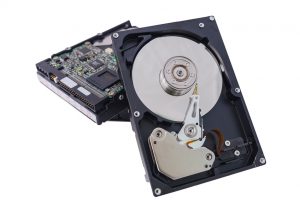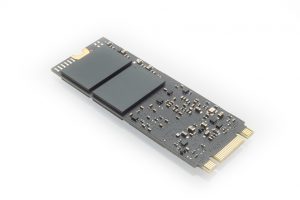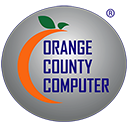Hard Disk Drives vs. Solid State Drives – What is the best choice?
Hard disk drives? Solid state drives? I’m so confused! You are not alone – most people absolutely have no idea what the difference is between a traditional hard disk drive (HDD) and a solid state drive (SSD). Why would you? Orange County Computer is here to help. Choosing between a traditional hard drive with moving parts vs. the updated technology of a solid-state drive can be a bit confusing for most consumers. Computer hardware options and choices can be confusing for many and we would like to help simplify the differences for you. Let’s first start by explaining what the function of a storage drive component is and then we will discuss how each drive is different.
First let’s start off by explaining the main function of a traditional hard drive and a solid state drive. The main function is to store data, these components hold or retrieve digital information on your computer. For example Word documents, iTunes music, applications etc. An important feature to consider when choosing your next long term storage component is the size. In the computer world data files are growing larger and larger every single day. It is important to pick the right size storage component to accommodate for the ever increasing data sizes. Hard drives and solid state drives come in many storage sizes. They can typically range from 250GB to 1TB for the average user. If you are using your system for photos and video storage, it is highly recommended to have a larger storage device.
Traditional Hard Disk Drive

So what’s the difference between a traditional hard drive and a solid state drive? A traditional hard drive has moving parts. It records and reads data on a metal circular disk. Like a needle on a vinyl record. While in operation the disk spins from the moment the computer is turned on until the moment it is turned off. traditional hard drives also create a great deal of heat during this process. Because of the moving parts, traditional hard drives are prone to fail due to shock and heat damage. PCs or laptops with these hard drives should not be moved around too often.
Solid State Drive

Solid state drives on the other hand do not consist of any moving parts. They store data files on a flash memory chip. Which in turn lets the system perform much faster in all aspects of its functionality. They create minimal heat, sound, require less power, and they much more durable. Solid state drives also let you access your data much faster than traditional hard drives. Lastly, solid state drives also are know to have a much longer life span.
So which is the better option? The answer is easy, solid state drives. But there is a catch, they are more expensive than traditional hard drives. The good news that the benefits outweigh the higher costs. Solid state drives are faster, more durable, more reliable, quiet, and create very minimal heat. Now that you are well informed on the differences between these two storage components, it’s up to you to make the decision on what component will fit your needs. If you are still unsure on which storage device is right for you and still need some guidance, please contact our Tech Repair Center at (949) 522-7709 and a member of our team will answer any questions you may have. We hope this information was helpful.
